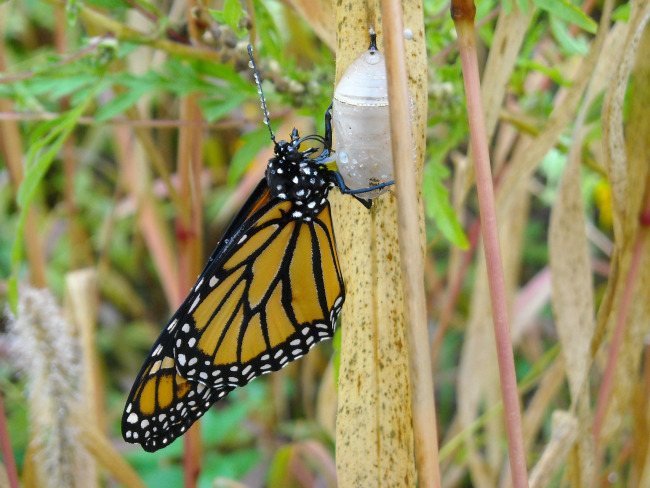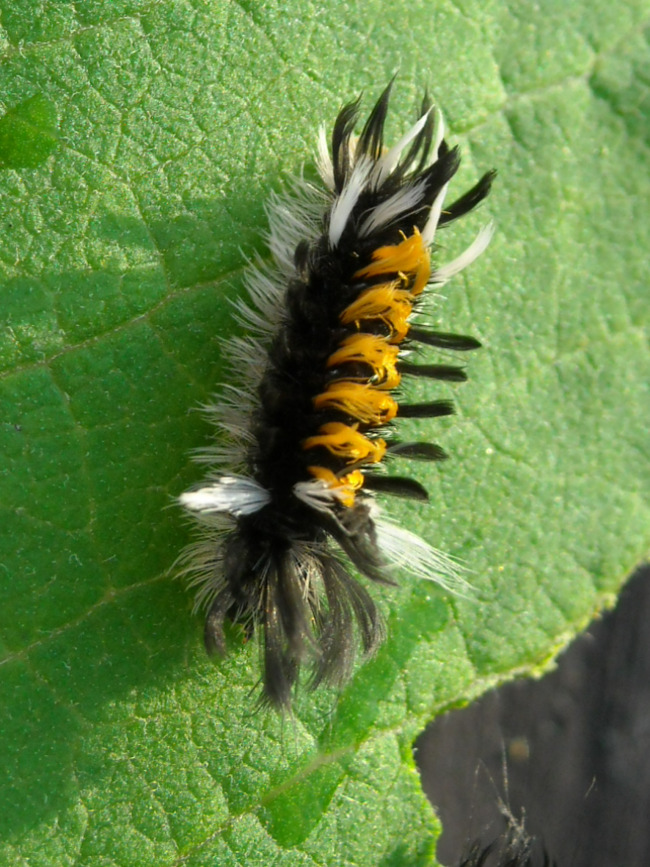
By Pamm Cooper
Most people who are butterfly aficionados have noticed that the Monarchs are few and far between this year. I have only seen two all year, and I am always out and about on power lines, in meadows, and walking trails where there is plenty of milkweed for the caterpillars to eat and native nectar source plants for the adults. The second monarch butterfly I saw was just this weekend at the Hebron Fair. It was all over the Spotted Joe- Pye weed outside the Better Living building. Hopefully, we will begin to see more as they begin their journey to Mexico where they spend the winter.
Any butterflies that emerge in late summer and early fall in the Northeastern United States will migrate to Angangueo, Mexico, where they rest hanging on Oyamel fir trees. As long as there is not a period of wet followed by a freeze, the monarchs are able to survive even a snowstorm, as long as snow is not prolonged. The monarchs that survive the winter will leave their overwintering site and travel back up to the Eastern U.S., laying eggs on milkweed as they go. As these early caterpillars hatch and complete their lifecycle, they will also begin travelling north, laying eggs until milkweed sources run out. Monarch butterflies from this second generation are the ones that will migrate to Mexico, having never been there before.
When there is a hard winter that is followed by a hard spring/ summer, Monarchs may have a difficult time surviving the journey northward. That is what happened in the winter of 2012- 2013 and the spring and summer this year. The spring was cold and dry in the southern portion of their migration, and flowers for nectar and milkweed for larvae were not as abundant as usual. June here in New England was unseasonably cold and wet and may have slowed monarchs on their way up here.

According to “ Monarch Butterfly News ‘, the number of butterflies that migrated to Mexico to overwinter in 2012 was 80% less than normal- 60 million vs. 350 million. The reason was attributed to low reproduction due to excessive heat and drought during the summer of 2012. So far this year, numbers of both caterpillars and butterflies in New England seem to be very low. It may take a few favorable years to return populations to previous numbers.
Some people that have butterfly gardens containing milkweed wonder why they never find a chrysalis on the plant even though there was a caterpillar on it. Many caterpillars, including the monarch, leave the host plant and may travel quite a distance before climbing up a plant to pupate. The monarch below I found on a giant foxtail on a rainy September day. The butterfly is resting right beside the chrysalis shell from which it has just eclosed. This butterfly would have begun its journey to Mexico after muscling up on some nectar.
As a final note, sometimes people get worried when they see milkweed tussock moth caterpillars on the same milkweed plant as a monarch caterpillar. They think they will be fighting it out for the same food, when in fact, the tussock prefers the older bottom leaves and the monarch the upper, newer, green leaves. So one minor “ problem “ solved!
